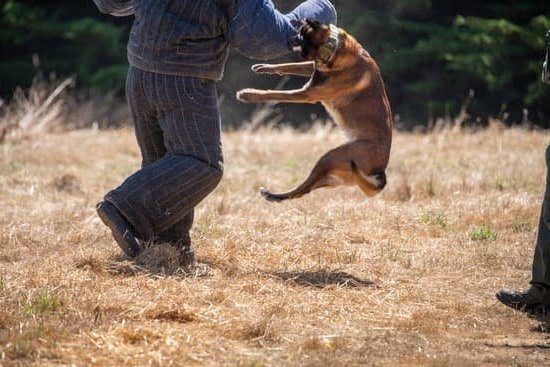How are sheep dogs trained to perform their vital role in agriculture? Sheep dogs play a crucial part in herding and managing livestock, contributing to the efficiency and productivity of farming practices. This article will delve into the innate instincts of sheep dogs, their training process, and the impact of their specialized skills on agriculture.
Sheep dogs possess natural herding abilities that make them indispensable for managing flocks of sheep and other livestock. Their instinctual behavior allows them to work closely with shepherds in guiding, organizing, and protecting the animals under their care. Understanding these innate instincts is essential in the training process to harness their capabilities effectively.
The training of sheep dogs involves various stages, starting from basic obedience commands to advanced techniques tailored to their specific roles in agriculture. Additionally, socialization, consistent reinforcement, and proper handling are crucial components in building a well-rounded working dog. By exploring these aspects of sheep dog training, we can gain insight into how these intelligent animals contribute significantly to the agricultural landscape.
The Natural Instincts of Sheep Dogs
One key aspect of how sheep dogs are trained involves harnessing and refining these natural instincts through structured training programs. From a young age, sheep dogs are introduced to basic obedience commands such as sit, stay, come, and heel. This foundational training lays the groundwork for more advanced herding techniques that are essential for managing livestock effectively.
In addition to obedience training, specialized training techniques are employed to develop the unique skills required for herding tasks. This includes teaching sheep dogs how to move livestock in a calm and controlled manner, as well as guiding them to understand the specific signals and cues from their handler. Advanced training methods such as boundary control, directional commands, and precision movements help sharpen the herding skills of sheep dogs so they can work efficiently in a variety of agricultural settings.
| Aspect of Sheep Dog Training | Description |
|---|---|
| Natural Instincts | Sheep dogs have been selectively bred for centuries for their innate herding abilities including stalking, chasing, and controlling livestock. |
| Obedience Training | Includes basic commands like sit, stay, come, heel as well as more advanced techniques essential for herding tasks. |
| Specialized Techniques | Involves teaching sheep dogs how to move livestock calmly and efficiently using precision movements and directional commands. |
Basic Obedience Training
Training sheep dogs in basic obedience is an essential part of their development as working animals on a farm. This type of training teaches them to respond to commands issued by their handlers, allowing for effective communication and control in the field. Here are some key components of basic obedience training for sheep dogs:
- Teaching basic commands: Sheep dogs are taught common commands such as “sit,” “stay,” “come,” and “heel.” These commands form the foundation of their obedience training and enable handlers to effectively manage the movements of the dogs while they work with livestock.
- Positive reinforcement: A crucial aspect of teaching sheep dogs basic obedience is the use of positive reinforcement. Handlers reward the dogs with treats, praise, or toys when they successfully follow a command, reinforcing good behavior and encouraging them to continue obeying.
- Consistent practice: Consistent practice and repetition are key to ingraining obedience commands into the behavior of sheep dogs. Handlers must regularly work with the dogs to ensure that they respond reliably to commands in various situations.
Understanding how are sheep dogs trained in basic obedience not only ensures their effectiveness as working animals but also contributes to their overall well-being. By establishing a strong foundation in obedience, these intelligent and capable animals become valuable partners in agricultural practices, effectively aiding shepherds in managing their livestock.
Advanced Training Techniques
Sheep dogs are known for their unique ability to control and direct sheep, but this specialized skill doesn’t come naturally. Advanced training techniques are crucial in developing the specific abilities that make sheep dogs valuable assets in agriculture. One of the key aspects of advanced training for sheep dogs is honing their herding instincts and teaching them to make quick decisions in a variety of situations.
A common technique used to develop the specialized skills of sheep dogs is behavior shaping, which involves reinforcing specific behaviors through positive reinforcement. This could include rewarding the dog for successfully herding a group of sheep or responding quickly to a command. By consistently rewarding desired behaviors, sheep dogs learn what is expected of them and become more proficient in their roles.
Another important aspect of advanced training for sheep dogs is exposure to different environments and situations. This helps them adapt to new challenges they may encounter while working on farms or ranches. By exposing them to various animals, noises, and terrains, trainers can help prepare sheep dogs for the diverse nature of their work.
Lastly, advanced training techniques also involve teaching sheep dogs skills beyond basic herding, such as guarding and protecting livestock from predators. This could include teaching them to patrol boundaries or stand guard over a herd. These advanced skills are essential in ensuring the safety and well-being of the livestock under their care.
| Training Technique | Description |
|---|---|
| Behavior Shaping | Reinforcing specific behaviors through positive reinforcement. |
| Exposure Training | Introducing sheep dogs to different environments, animals, and terrains. |
| Guarding Skills Training | Teaching sheep dogs how to protect livestock from predators. |
Socialization and Exposure
Sheep dogs play a crucial role in agriculture, particularly in herding and managing livestock. To become effective working dogs, they undergo specific training to develop their natural instincts and specialized skills. One essential aspect of sheep dog training is socialization and exposure to various environments and animals.
Socialization plays a significant role in shaping the behavior and temperament of sheep dogs. It involves introducing them to different situations, environments, people, and animals from an early age. This exposure helps them become comfortable and adaptable in various settings, reducing the likelihood of fear or aggressive behavior towards new stimuli.
During the socialization process, sheep dogs are gradually exposed to the sights, sounds, and smells they are likely to encounter while working on a farm or ranch. They are introduced to different livestock such as sheep, cattle, or poultry, teaching them how to interact with these animals calmly and confidently. Additionally, they are familiarized with farm equipment, vehicles, and noises so that they remain focused on their tasks despite distractions.
Special attention is given to exposing sheep dogs to diverse environments outside their familiar surroundings. They are taken on walks in urban areas, parks, and other public spaces to accustom them to different surfaces underfoot and unpredictable situations. This exposure helps build their confidence and adaptability as they navigate through unfamiliar territories during their work. Overall, socialization not only enhances the well-being of sheep dogs but also ensures that they can perform their duties effectively under various conditions.
The Importance of Consistent Training and Reinforcement
Consistent training and reinforcement are essential in maintaining the skills of sheep dogs. These working dogs require ongoing training to ensure that they are able to effectively perform their duties on the farm. Here are some key aspects of consistent training and reinforcement for sheep dogs:
1. Regular practice: Sheep dogs need regular practice to maintain their herding abilities and obedience to commands. This can include daily training sessions where they work with the shepherd to move livestock or practice responding to different commands.
2. Positive reinforcement: Using positive reinforcement, such as treats, praise, or playtime, is crucial in reinforcing good behavior and response to commands in sheep dogs. When they successfully complete a task or obey a command, it’s important to reward them for their efforts.
3. Consistency in commands: The use of consistent commands from the shepherd is vital in maintaining the skills of sheep dogs. This allows the dogs to understand what is expected of them and reduces confusion during herding tasks.
4. Continued learning: Just like any other skill, the abilities of sheep dogs can diminish if not consistently practiced and reinforced. Training should not stop once a certain level of proficiency is reached; it should continue throughout the dog’s working life.
In addition to these aspects, it’s important for handlers to stay up-to-date with modern training techniques and methods for working with sheep dogs. Understanding the psychology and behavior of these animals is also crucial in maintaining their skills through consistent training and reinforcement.
Overall, consistent training and reinforcement play a critical role in maintaining the skills and abilities of sheep dogs, ensuring that they are effective working partners on the farm. Working closely with these intelligent animals through ongoing training helps strengthen the bond between shepherd and dog while contributing to successful farming practices.
Handling and Care of Sheep Dogs
Sheep dogs are indispensable partners in agriculture, as they play a crucial role in herding and managing livestock. The well-being and health of these working dogs are essential to their effectiveness on the farm. In this section, we will look at how sheep dogs are cared for and trained to ensure their overall health and ability to perform their duties.
Physical Care
Proper physical care is essential for the well-being of sheep dogs. This includes regular grooming, nail trimming, and ensuring that they receive proper nutrition and exercise. Regular visits to the veterinarian for vaccinations, check-ups, and preventive treatments are also crucial in maintaining the overall health of working dogs. This physical care not only ensures the comfort of the sheep dog but also contributes to its ability to work effectively in various weather and environmental conditions.
Mental Stimulation
In addition to physical care, sheep dogs also require mental stimulation to stay sharp and focused on their tasks. Engaging activities such as puzzle toys, obedience training sessions, and exposure to different environments can help keep them mentally alert and responsive. Mental stimulation is especially important for sheep dogs during periods when they may not be actively herding or working with livestock.
Training Techniques
Training methods for working sheep dogs vary, but they typically involve a combination of positive reinforcement, consistency, and clear communication from the shepherd. Training begins at a young age, with basic obedience commands such as sit, stay, come, and leash walking. As the dog matures, more advanced training techniques focus on honing their herding abilities and responding quickly to specific commands while managing livestock.
By prioritizing the physical care, mental stimulation, and effective training of sheep dogs, farmers can ensure that these working companions remain healthy and fully capable of performing their vital role in agriculture.
The Bond Between Shepherd and Sheep Dog
The bond between a shepherd and a sheep dog is an essential aspect of successful herding and agricultural practices. This unique relationship is built on trust, communication, and respect between the two partners. Understanding the dynamics of this bond sheds light on how effective sheep dogs are in their role as herders.
Communication and Trust
Shepherds and sheep dogs develop a strong bond through effective communication and mutual trust. The shepherd relies on the instincts and natural abilities of the dog to gather, drive, and protect the flock. By giving clear commands and signals, the shepherd guides the dog in directing the movement of the sheep. In turn, the sheep dog learns to understand and respond to these cues with unwavering trust in its handler.
Working as a Team
The partnership between a shepherd and a sheep dog is akin to teamwork. They work together seamlessly to manage large flocks across varied terrains. The shepherd depends on the dog’s ability to navigate challenging landscapes while keeping the flock together, ensuring their safety from predators or adverse weather conditions. This collaborative effort showcases how well-trained sheep dogs play a pivotal role in maintaining agricultural productivity.
Companionship and Loyalty
Beyond their working relationship, shepherds often form deep bonds with their sheep dogs based on companionship and loyalty. Many shepherds spend countless hours alongside their canine companions, creating a strong emotional attachment that goes beyond their professional duties. This deep connection further emphasizes the significance of nurturing a strong bond between a shepherd and their trusted sheep dog.
Overall, understanding.
Conclusion
In conclusion, the training of sheep dogs is a vital aspect of agriculture and farming practices. Understanding the natural instincts of these working dogs and providing them with basic obedience training lays the foundation for their development as valuable assets in herding and livestock management. Advanced training techniques further enhance their specialized skills, making them essential partners for shepherds in their daily tasks.
Socialization and exposure to various environments and animals are important in shaping well-rounded sheep dogs, while consistent training and reinforcement ensure that their skills are maintained at optimal levels. The handling and care of these working dogs are also crucial for their well-being and overall health. It is through the bond between shepherd and sheep dog that a unique relationship is formed, built on trust, communication, and mutual respect.
The impact of well-trained sheep dogs on agriculture and farming practices cannot be overstated. These highly skilled animals contribute significantly to the efficiency of livestock management, aiding in the herding, protection, and control of flocks.
They play a crucial role in ensuring the safety and welfare of sheep, as well as improving the productivity of farming operations. In essence, the training of sheep dogs not only enhances their individual capabilities but also has a positive effect on the overall success and sustainability of agricultural endeavors.
Frequently Asked Questions
How Do They Train a Sheep Dog?
They train a sheepdog by using a combination of instinct, obedience, and socialization. From a young age, sheepdogs are introduced to herding tasks and taught basic commands to control their behavior around livestock.
Are Sheepdogs Trained?
Yes, sheepdogs are trained from a young age to develop the skills necessary for herding and protecting livestock. This training involves consistent practice, exposure to different environments, and reinforcement of commands through positive rewards.
Is It Hard to Train a Sheepdog?
Training a sheepdog can be challenging due to their high intelligence and independent nature. It requires patience, consistency, and dedication from the trainer to effectively teach the dog how to respond to commands and exhibit appropriate behavior when herding sheep or other animals.

Welcome to the blog! I am a professional dog trainer and have been working with dogs for many years. In this blog, I will be discussing various topics related to dog training, including tips, tricks, and advice. I hope you find this information helpful and informative. Thanks for reading!





